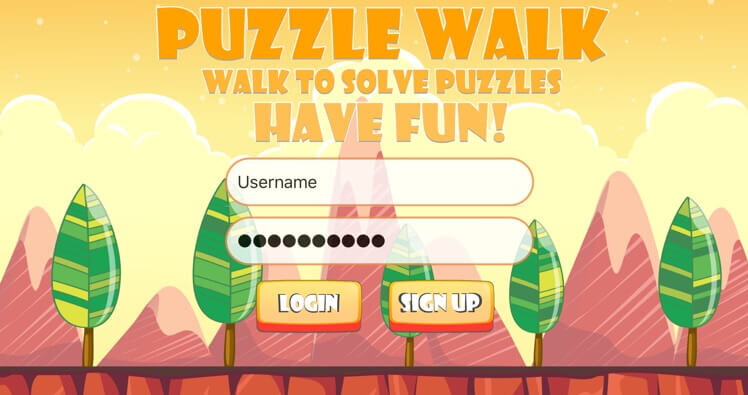
It is well documented that now more than ever, getting outside for exercise and fresh air has become critical for the health and well-being of all our students (Louv, 2007; SHAPE AMERICA, 2014; Steffen & Stiehl, 2010; Taylor & Kuo, 2009). This is especially the case for students who may experience varying emotional difficulties like anxiety and depression; or those who have been identified as having other challenges like attention disorders or other barriers to learning. The purpose of our paper is to offer an option for physical education and classroom teachers to provide an outside activity opportunity for students who have been identified as having Autism Spectrum Disorder (ASD). The activity itself involves using an application called PuzzleWalk that can be accessed on a smartphone or other device (Lee, Frey, Min, Cothran, Bellini, Han, & Shih, 2020).
 Being teachers ourselves, we do not simply look at providing Developmental Adapted Physical Education (DAPE) (Kelly, 2019) opportunities for our students as merely a necessary formality. We also view fully inclusive access to opportunities for a fulfilling, active lifestyle as a social justice issue for all our students. Equal opportunities being provided to all our students is key. We are well aware of the negative effects that technology overload is having on all our students and teachers (Mustafaoglu, Zirek, Yasaci, & Ozdincler, 2018), especially during the past year. So, we are also not coming from the standpoint of simply promoting technology use. Rather, we are embracing the notion that students who have been identified as having ASD tend to respond well to interactive technologies including human/computer interaction.
Being teachers ourselves, we do not simply look at providing Developmental Adapted Physical Education (DAPE) (Kelly, 2019) opportunities for our students as merely a necessary formality. We also view fully inclusive access to opportunities for a fulfilling, active lifestyle as a social justice issue for all our students. Equal opportunities being provided to all our students is key. We are well aware of the negative effects that technology overload is having on all our students and teachers (Mustafaoglu, Zirek, Yasaci, & Ozdincler, 2018), especially during the past year. So, we are also not coming from the standpoint of simply promoting technology use. Rather, we are embracing the notion that students who have been identified as having ASD tend to respond well to interactive technologies including human/computer interaction.

Additional aspects of our rationale are that using mobile technology as a physical activity intervention for students with ASD is their attraction to technology use due to its predictability and relatively low social requirements compared to traditional face-to-face social interactions (Kuo, Orsmond, Coster, & Cohn, 2014). Also, it is known that students with ASD possess particular strengths in visuospatial learning such as block design and image-based problem solving; this is why they are visual learners. A mobile application like PuzzleWalk allows students with ASD to be self-directed learners in their communities.

Beyond working with students with ASD, recent research in various professional fields has shown that, depending on the game type and purpose, certain video games can lead to positive effects for participants (Franceschini, Trevisan, Ronconi, Bertoni, Colmar, Double, Facoetti &, Gori, 2017; Granic, Lobel., & Engels, 2014; Zayeni, Raynaud, & Revet, 2020; Uttal, Meadow, Tipton, Hand, Alden, Warren, & Newcombe, 2013). For example, the use of electronic and video games as a therapeutic intervention has shown success in the prevention and reduction of childhood anxiety and depression (Zayeni, Raynaud, & Revet, 2020). In cognitive psychology (Keilani & Delvenne, 2020), the use of electronic and video games has been shown to help patients manage social and emotional issues as well as improve focus, multitasking, and working memory (Keilani & Delvenne, 2020). Furthermore, children with other learning disabilities, such as dyslexia, have shown improved focused visuospatial attention, phonological short-term memory and ability to interpret and blend multiple sounds, all of which can positively enhance reading skills after training with action video games (Franceschini et al., 2017).
